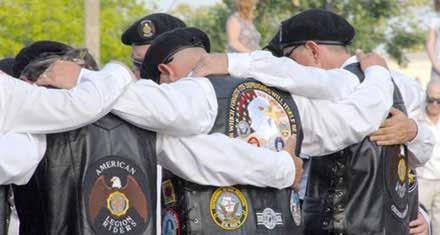
28 minute read
Legion Riders
ABOUT THE LEGION RIDERS

Advertisement






A
American Legion Riders chapters are well known for their charitable work, which has raised hundreds of thousands of dollars for local children's hospitals, schools, veteran’s homes, severely wounded service members and scholarships. Since 2006, Riders nationwide have participated in The American Legion Legacy Run to annually raise money for the Legacy Scholarship Fund, established to provide scholarships to children of U.S. military personnel killed since Sept. 11, 2001.
For the latest in Riders apparel and gear, including patches, go to Legion Rider Merchandise - Emblem Sales.
History
In Garden City, Mich., in 1993, Chuck "Tramp" Dare and Bill "Polka" Kaledas, commander of American Legion Post 396, shared an idea to start a motorcycle enthusiasts association within the organization. The two longtime riders wanted an environment where Legion family members could come together to share a common love for motorcycles.
Dare and Kaledas wrote a letter to Michigan Department Adjutant Hubert Hess, sharing their idea. Hess replied that he liked the concept and wanted to pursue it. Later, he gave Kaledas and Dare instructions for managing the program at the post level. He also explained how they could be approved to use the American Legion emblem, and how to gain Membership's support and recognition. At a regular meeting, Post 396 members passed a resolution for a new program to be known as the "American Legion Riders."
Joined by 19 other founding members from their post, Dare and Kaledas were flooded with requests for information about their organization. They agreed to establish a central source for the Riders to ensure that chapters formed not as motorcycle clubs or gangs, but as Legionnaires and Auxiliary and SAL members joining to ride as Legion family.
Legion Riders today
Currently, over 110,000 American Legion Riders meet in over 2,000 chapters in every domestic department and in at least three foreign countries. Riders in Iowa have formed an honor guard called The Five Star Freedom Riders, and Riders in Mulvane, Kan., founded the Patriot Guard to protect the sanctity of military funerals from protesters. Riders in all states have escorted military units returning home from combat tours overseas, conducted massive cross-country fundraising events for wounded warriors from all services, and have raised millions of dollars for countless local, state and national charities. Many Riders, supported by their departments, conduct annual statewide Legacy Runs in direct support of American Legion scholarship programs of Operation Comfort Warriors (OCW), supporting our wounded service members across the nation.


Wendy Porter
Executive Director
Office: 661.328.8600 Mobile: 661.706.7452
wendy@thewoundedheroesfund.org thewoundedheroesfund.org
3129 Standard St. Bakersfield, CA 93308 Ein# 80-0215850







G B R
GREEN BOX RENTALS, INC. (559) 733-5345
RENTALS ● SALES ● MODIFICATIONS

sales@greenboxrentals.com
6988 Avenue 304 Visalia, CA 93291
www.greenboxrentals.com

Phone (559) 733-5345 Fax (559) 651-4288

V.E.T.S.
A THEME AND A VISION
BY VINCENT J. “JIM” TROIOLA, NATIONAL COMMANDER
T
The sleeve of The American Legion 2022-2023 membership shirt includes a familiar word: V.E.T.S.
It isn’t just a description of who we are. When used as an acronym, it is my theme for the year and a recipe for operating a successful American Legion post.
Through this concept, those who served (Veterans), will train (Education) Legionnaires about our advocacy, programs and remarkable history. We will work together (Teamwork) to grow and accomplish great things, as we mentor (Sponsor) the next generation of Legionnaires.
Programs that enjoy the greatest success are rarely the result of one person’s efforts. The Sergeant First Class Heath Robinson Honoring Our PACT Act was not passed because of any one of us. It was passed because thousands of Legionnaires contacted their representatives and senators before key votes.
An informed Legionnaire is a more effective Legionnaire. By working as a knowledgeable team and preparing our successors to improve on our accomplishments and innovate for future achievements, we can bequeath an even stronger American Legion than we inherited.
This vision only works with a strong membership base. I will proudly send any post that achieves a 90 percent retention rate this year a pin, which includes my V.E.T.S. theme. Those that achieve 95 percent will receive a V.E.T.S. coin. Membership-Excellence pins will go to posts that recruit five members from expired rosters.
I will also be signing national commander’s license plates for posts that achieve the “excellence” designation. Finally, departments will receive numbered V.E.T.S. coins to be given to Legionnaires of their choice who have gone above and beyond for membership.
Our membership demographics are shifting. This is a welcome development. The American Legion has always believed that a veteran is a veteran, but at the same time we cannot ignore the fact that one size does not fit all. Diversity means that tastes differ when it comes to entertainment, food and activities. The needs and priorities of a 20-year-old female veteran might be very different than what is important to her 75-year-old male counterpart.
As far as this national commander is concerned, you are all to be equally valued.
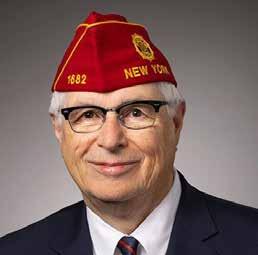
Veterans Strengthening America, Vincent J. “Jim” Troiola National Commander
OPERATION HOME FRONT
BACK TO SCHOOL SUPPLY DRIVE
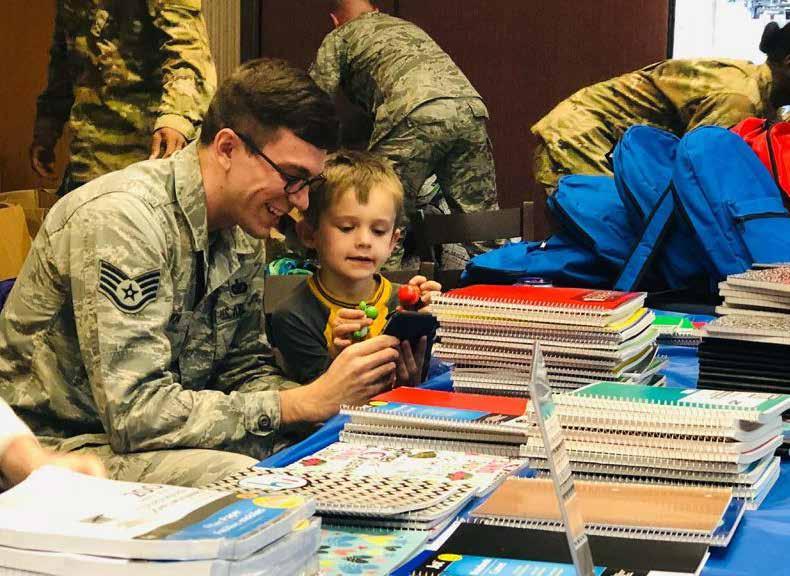

David Graham and I discussed the importance of honoring the Operation Home front mission of providing school supplies to military families, especially families registered to receive the donations. David suggested donations be offered to NAS Lemoore and Edwards Air Force Base who is registered to receive the supplies.
In keeping with previous practices, ALA members Brenda Preston and Shirley Park coordinated and supervised the distribution of approximately 1,000 school supplies last week to local teachers and CAPK. I’m certain the teachers were overjoyed with these donations.
The total supplies accounted for were 1,608 or approximately $2,185 in merchandise donated by our community for military families
Special recognition goes to ALA Unit 26 members Amy Watkins, Taylor Watkins, Brenda Preston, and Shirley Park, the staff at Dollar Tree, and our community for working together to collect more than 1,600 school supplies for military families.
In the spirit of Service Not Self,
Sherry Core President, Unit 26, District 15 Auxiliary, Dept. of California



TERRIO provides Adult/Pediatric Outpatient Physical Therapy, Aquatic Physical Therapy, Low-Level Rehab, Hospital Inpatient Therapy, In-School Occupational Therapy, In-Home Early Intervention and Sports Training at 13 locations across Bakersfield, Tehachapi, Delano, Fresno and Clovis
(not all services available at each location)
Find out more at http://myTERRIO.com





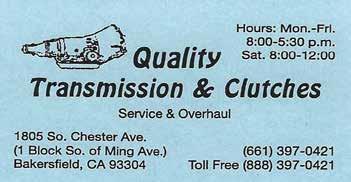

PACT ACT

TThe American Legion’s National Legislative Division serves as the principal advocate of service members, veterans and their families on Capitol Hill where they are responsible for promoting the organization’s positions and priorities to Congress. Doing so, they provide members of Congress and their professional staff with valuable information and expertise, which has defined The American Legion as an institutional authority in the veteran community.
On the National Legislative Division’s Legislative Center page, Legionnaires are able to access legislative testimony that has been delivered to Congress and the organization’s legislative agenda. Additionally, there are useful resources including the Legislative Action Center, congressional contact report forms and an advocacy toolkit.
"Grassroots advocacy by Legionnaires to pass legislation that supports the military and veteran community is at the core of what we do as an organization,” said American Legion Legislative Director Lawrence Montreuil. “I'd encourage all members to visit our legislative advocacy center and sign up for advocacy alerts as well as our weekly legislative newsletters so they can keep abreast of legislation that impacts our veterans and service members."
In the lead up to the vote on the historic PACT Act, Legionnaires used these grassroots resources to send more than 34,000 messages to members of Congress, urging them to pass the legislation. The PACT Act was signed into law on Aug. 10.
PACT ACT CLEARS
FINAL HURDLE TO THE PRESIDENT’S DESK
BY MACKENZIE WOLF

The U.S. Senate issued its final vote on the historic Sergeant First Class Heath Robinson Honoring Our PACT Act, ensuring millions of veterans exposed to noxious fumes emanating from burn pits will have access to Department of Veterans Affairs (VA) care and benefits.
The American Legion-supported legislation passed by a vote of 86-11.
“Tonight, the U.S. Senate passed historic legislation that will make a difference in the lives of millions of veterans,” American Legion National Commander Paul E. Dillard said. “After some unusual delays for a bill that is largely identical to what passed on June 16, a bipartisan majority of senators voted in favor of the Sergeant First Class Heath Robinson Honoring Our PACT Act. This act will save lives and offer health care and benefits for those exposed to the poisons of war while serving our country.” Dillard pointed out that the Legion’s grassroots advocacy helped ensure the bill’s approval.
“It would not have passed without the tireless efforts of our American Legion Family and friends who contacted lawmakers and encouraged them to do right by America’s veterans. We look forward to President Biden signing the PACT Act expeditiously.”
The bill was previously passed in both the House and Senate before it received technical corrections and went to a procedural vote in the Senate on July 27. The 55-42 vote failed to meet the 60 votes necessary to advance the legislation when 25 senators who previously voted in favor of the bill flipped their votes citing newfound concerns with the legislation.
The PACT Act addresses the full spectrum of issues affecting toxic-exposed veterans’ access to VA benefits and care, while also reforming VA’s presumptive decision-making process.
The sweeping legislation provides a comprehensive framework to improve the presumptive process for burn pit veterans by streamlining access to health-care benefits for those who served in areas of known toxic exposure — regardless of disability status — and provides health care for as many as 3.5 million veterans exposed to airborne hazards and burn pits.
Toxic smoke and fumes from burn pits in Iraq and Afghanistan included medical and human waste, jet fuel, chemicals, metal, munitions and unexploded ordnance, petroleum and lubricant products, plastics, Styrofoam and more.
The bill is named after Army National Guard Sgt. Heath Robinson. After deploying to Kosovo and Iraq as a combat medic with the Ohio National Guard, Robinson was diagnosed with a rare autoimmune disorder and stage 4 lung cancer. He died in May 2020, leaving behind his wife and daughter, Brielle. The legislation is expected to be signed into law by President Biden in the coming days.



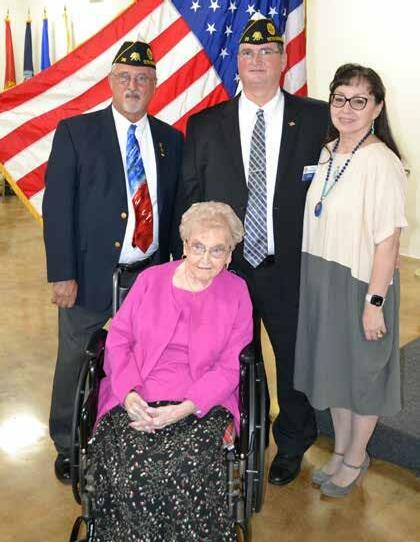
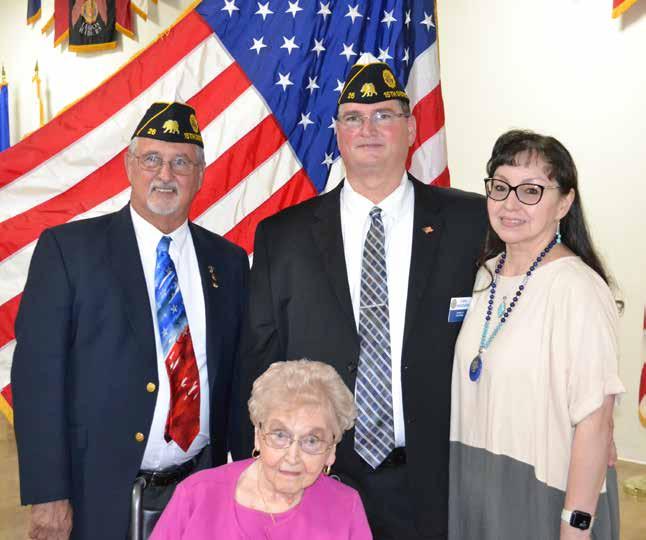

IT IS A SYSTEM WORTH SAVING
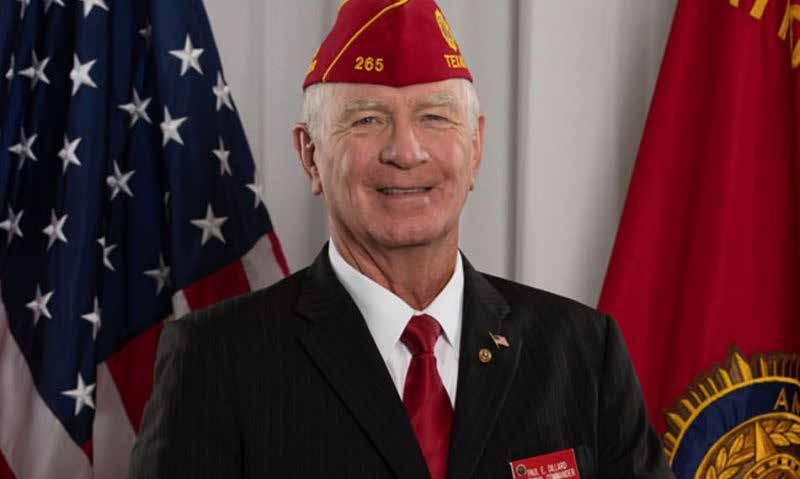
WWe have so many life-enhancing programs; it’s sometimes challenging to keep up with all of them. That’s especially true for ones that are sidelined, even temporarily, through no fault of their own.
Case in point: Our System worth saving program, which until last week had been on pause for more than two years due to safety concerns with the pandemic.
Since 2003, The American Legion has conducted hundreds of these on-site visits to assess the care veterans are receiving at their VA medical centers, work with VA staff on solutions to issues that arise and help identify best practices that can be shared across VA. In those nearly two decades, we’ve improved communications between veterans and medical staff, helped improve the quality of care and spearheaded numerous other enhancements.
It should be noted that during the pandemic, our Veterans Affairs & Rehabilitation Commission members and staff worked hard to continue these improvements. They just were not able to do so on site. But that changed on July 11 when a week-long visit was held in Columbia, S.C. The event kicked off with a town hall meeting at American Legion Post 130 in Cayce, just outside Columbia. About 35 veterans, Columbia VA Medical Center staff and others engaged in a cordial conversation, identifying positive aspects of care and issues that need addressing.
Similar site visits are planned later this year, including the next one in Puerto Rico in September, followed by Sacramento, Calif., in October and the Bronx, N.Y., in December.
The success of the Columbia visit is a strong indicator that SWS is back and ready to carry on its rich tradition of improving health care for veterans. Perhaps Ralph Bozella, chairman of The American Legion’s Veterans Affairs & Rehabilitation Commission, said it best at the town hall.
“We’re going to talk to each other, we’re going to identify the problems and we’re going to work together to fix the problems,” he said. “It has to be us that make the change, and its constant work. That’s who we are as The American Legion. It’s in our DNA. We’re here to help veterans.”
And that is because we are … Veterans Strengthening America.
Paul E. Dillard National Commander The American Legion


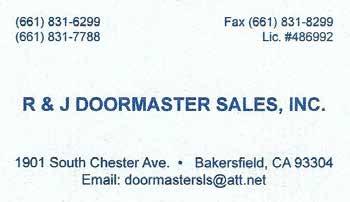
VETERANS CRISIS LINE
NEW PHONE NUMBER

TThe VA administers the Veterans Crisis Line (VCL) through the National Suicide Prevention Lifeline (Lifeline) national network. Veterans currently reach the VCL by calling the 10-digit Lifeline phone number, 800-273-8255, and then pressing 1 to be Connected to responders trained to understand the unique needs and challenges of veterans.
The National Suicide Hotline Designation Act, signed into law in 2020, authorized 988 as The new three-digit number for the Lifeline. All telephone service providers in the U.S. must activate 988 no later than July 16, 2022. Once a Veteran’s telephone service provider makes 988 available, Veterans will be able to reach the VCL by dialing 988 and then dialing 1. Dial 988 then Press 1.


Nutrient TECH would like to thank all of our Veterans and active service members. We Salute You!
Essential
Concentrated nutrient solutions, fueled by SimplyFLO, for maximum safety and performance
Biosolutions
Natural ingredients plus targeted nutrition provides synergistic benefits to improve crops
NUTRIGANIC®
Concentrated OMRI listed & CDFA OIM registered organic suspensions developed using the same proprietary milling process unique to Nutrient TECH
www.Nutrient. TECH

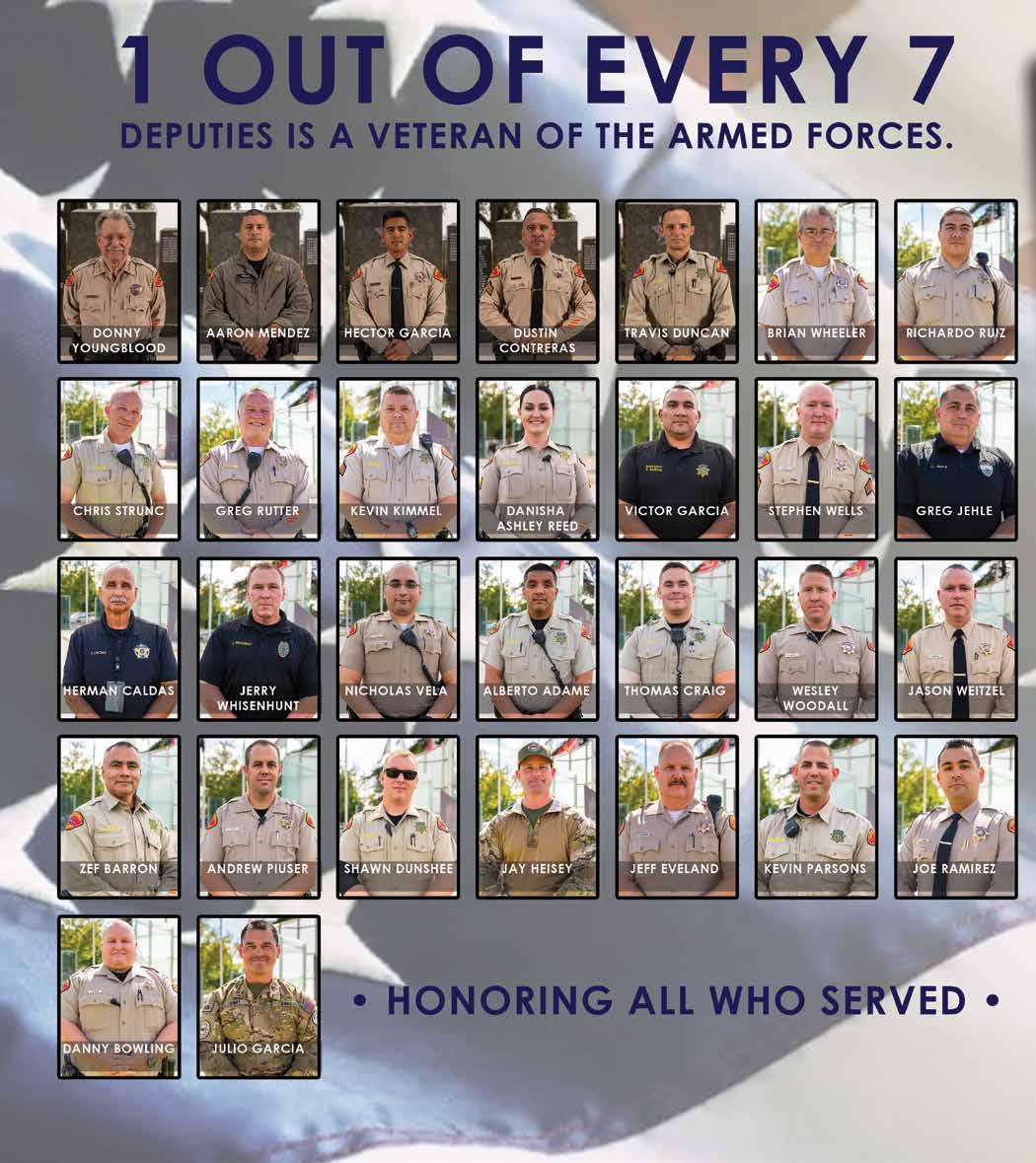
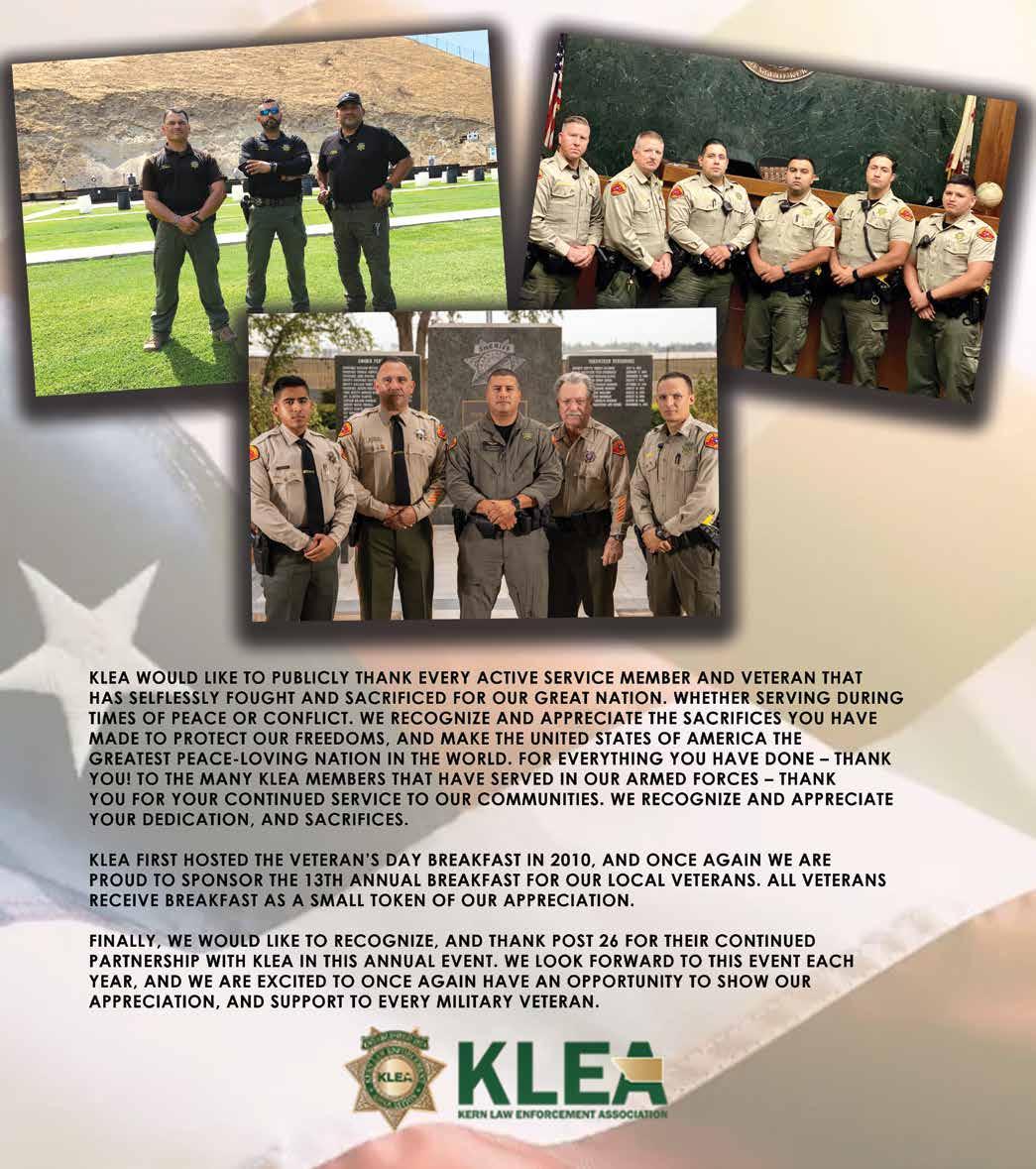
BACK TO THE FUTURE FOR NATO
BY ALAN W. DOWD



NNATO has unveiled a new Strategic Concept – a kind of mission statement for the 30-member alliance (soon to be 32-member alliance). The 2022 Strategic Concept is the first overhaul of NATO’s mission statement in a dozen years. Tellingly, the document has much more in common with NATO’s posture during its first four decades than that of the 1990s and early 2000s.
Yesterday NATO has relied on Strategic Concepts to guide alliance operations and deployments – and signal alliance adversaries – since it’s founding in 1949. Strategic Concepts have evolved as times and threats change, but all are premised on deterring war. As Lord Hastings Ismay, NATO’s first secretary-general, explained, “The paramount, the permanent, the all-absorbing business of NATO is to avoid war.”
NATO’s first Strategic Concept (1949) focused on developing “a maximum of strength through collective defense planning,” bringing together forces capable of “preventing war” and ensuring “the effective application of the military and industrial strength of the treaty nations in a common defense.” Toward that end, it steered the alliance toward fielding capabilities to “counter … enemy offensives against North Atlantic Treaty powers by all means available,” to “secure and control sea and air lines of communication,” and to “unite the strength of the North Atlantic Treaty nations in order to promote the preservation of peace.”
NATO’s second Strategic Concept (1952) aimed “to convince the USSR that war does not pay … to oppose, by all measures short of war, any peacetime attempts by the USSR or her satellites to increase their threat” against NATO members, “to achieve and maintain technical superiority … to provide mutual assistance” across the alliance, to accelerate the “standardization of equipment and coordination of production,” and to promote the “interchange of planning, intelligence and technical information.”
The third Strategic Concept (1957) called on each NATO member to “develop its military strength to the maximum extent … in harmony with the primary importance of protecting the NATO area, provide for its own defense and, where applicable, its defense commitments elsewhere.” The document added, “In order to preserve peace and security in the NATO area, it is essential that … hostile Soviet influence in non-NATO regions is countered.”
NATO issued its fourth Strategic Concept in 1966, calling for deterrence “by confronting any possible, threatened or actual aggression, ranging from covert operations to all-out nuclear war.” Warsaw Pact members, NATO declared, “must not be given any reason to think that they could gain their objectives by the threat or use of military force against any part of the North Atlantic Treaty area.” The


(Continued on Page 31)


Veterans THANK YOU
Growers, Shippers, Importers & Exporter of Select Quality Product Since 1941 33150 Pond Road | Delano, CA 93215 | Office: (661) 725-3755
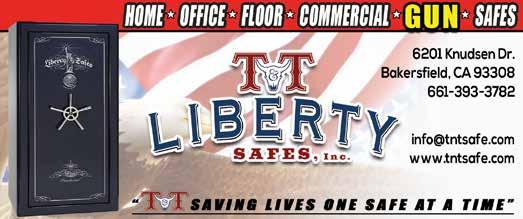

BACK TO THE FUTURE FOR NATO (Continued from Page 30)
document also trumpeted the concept of “forward defense” and warned of “major aggression, possibly supported by tactical nuclear and chemical weapons,” as well as “limited aggression … against an individual NATO country.”
With the fall of the Berlin Wall and retreat of the Soviet Empire, the 1991 Strategic Concept hailed a “radically improved … security environment” – and understandably so. The document pointed to the regained sovereignty of the USSR's former vassals in Eastern Europe, the independence of the Baltic’s, the withdrawal of Soviet forces from Hungary and Czechoslovakia, and the reunification of Germany. “General war in Europe has become highly unlikely,” the document cheered. “The threat of a simultaneous, full-scale attack on all of NATO's European fronts has effectively been removed.” NATO’s commitment to deterrence and its all-for-one Article V obligations remained, but there was a dramatic shift away from “the concept of forward defense towards a reduced forward presence.
The 1999 Strategic Concept committed the alliance to stability in the Balkans, “peace support operations,” “cooperation and dialogue … with Russia,” “extending stability” into Eastern Europe, pursuing “common interest, reciprocity and transparency” with Russia, and building “a lasting and inclusive peace in the Euro-Atlantic area based on the principles of democracy and cooperative security.”
Even in the 2010 Strategic Concept – drafted after Russia’s invasion of NATO aspirant Georgia – NATO leaders clung to hopes of “a true strategic partnership between NATO and Russia” and “practical cooperation with Russia.” The document declared that the “threat of a conventional attack against NATO territory is low.” And it made no mention of the Arctic, the Indo-Pacific, China or the threat posed by the emerging China-Russia entente.
Today that brings us to the 2022 Strategic Concept. What’s most striking and revealing is how little it has in common with the 1991, 1999 and 2010 documents, how much it echoes Cold War-era Strategic Concepts, and how much the world has changed – or more accurately, changed back.
Noting that the Russian Federation’s war of aggression against Ukraine “has shattered peace and gravely altered our security environment,” the new Strategic Concept explains that NATO faces an era of “strategic competition” and “pervasive instability.” The document labels Putin’s Russia a “direct threat to allies’ security and to peace and stability in the Euro-Atlantic.” It confirms what some of us have warned for the better part of two decades – that “we cannot consider the Russian Federation to be our partner.” And like the 1966 document, the text warns that NATO “cannot discount the possibility of an attack.”
Echoing the 1949 Strategic Concept, the new Strategic Concept commits the allies to “enhance the collective readiness, responsiveness, deploy ability, integration and interoperability of our forces.”
The new Strategic Concept vows to “deter and defend forward with robust in-place, multi-domain, combat-ready forces, enhanced command and control arrangements, prepositioned ammunition and equipment, and improved capacity and infrastructure to rapidly reinforce any ally.” Here, the alliance borrows from the 1952 Strategic Concept’s commitment to enhance the quality and quantity of weapons systems NATO-wide, as well as the 1966 document’s commitment to “forward defense.”
To enhance NATO’s deterrent posture, the new Strategic Concept directs allies to “increase the alignment of national and NATO defense plans … strengthen and modernize the NATO force structure … (and) enhance the collective readiness, responsiveness, deploy ability, integration and interoperability of our forces.” NATO’s leaders warn, “No one should doubt our strength and resolve to defend every inch of allied territory.” In this, the alliance is repeating the 1966 Strategic Concept’s warning against Moscow gambling with “the threat or use of military force against any part of the North Atlantic Treaty area.”
The new Strategic Concept recognizes that the threats to NATO are not confined to Europe – and that the Kremlin is not the sole source of threats.
“Cyberspace is contested at all times,” the 2022 strategy declares. The document warns that malign actors “seek to degrade our critical infrastructure, interfere with our government services, extract intelligence, steal intellectual property and impede our military activities.”
The document adds that hostile regimes “are investing in technologies that could restrict our access and freedom to operate in space, degrade our space capabilities, target our civilian and military infrastructure, impair our defense, and harm our security.”
The Strategic Concept labels Russia’s actions in the Arctic “a strategic challenge” and raises alarms over Russia’s “capability to disrupt allied reinforcements and freedom of navigation across the North Atlantic.” Half a world away, the PRC is identified – for the first time ever in a NATO Strategic Concept – as a threat. The PRC’s “ambitions and coercive policies challenge our interests, security and values,” the Strategic Concept declares. Like the 1957 document’s linkage of security in the NATO footprint with threats from nonNATO regions, the 2022 Strategic Concept calls on NATO allies to contribute to Indo-Pacific security, to “stand up for our shared values and the rules-based international order, including freedom of navigation,” and to “strengthen dialogue and cooperation with new and existing partners in the Indo-Pacific to tackle cross-regional challenges.”
The document calls out Beijing’s “malicious hybrid and cyber operations … confrontational rhetoric and disinformation” against NATO members. It condemns
(Continued on Page 33)



AVOIDING SCAMMERS
WHO CLAIM TO BE IRS AGENTS
IIn July, the Internal Revenue Service (IRS) published Fact Sheet 2022-33. This publication is designed to assist taxpayers in knowing whether an individual who contacts them is from the IRS or is a fraudster.
The IRS is concerned because there are continuing phone, text, email and inperson scams taking place. The agency emphasizes that it normally sends a letter or written notice to a taxpayer and generally does not initiate contact through phone, text or email.
With a growing number of fraudsters and scammers seeking to locate victims, it is important for individuals to be able to separate legitimate IRS staff from imposters. All taxpayers should understand basic ways to protect themselves from fraudulent text messages, emails, phone contacts or in-person visits.
Text Messages: The IRS does not send text messages to individuals with shortened links. The scammers will frequently send a text message that includes a bogus link. If you receive an unexpected text, you should not click on links or open attachments. If you do receive a suspicious text message, you should send a screen shot of it as an attachment to phishing@irs.gov.
Email Scams: The IRS does not ask for personal or financial information with an initial contact by email. The standard IRS contact will be through several letters by regular mail. The suspicious email should also be forwarded to phishing@irs. gov. There is a "Report Phishing and Online Scams" page on IRS.gov with specific instructions.
Individuals Who Owe Tax: If you owe tax to the IRS, you can expect to receive several letters prior to a phone call. The IRS may follow up the letters with a phone call if you have an overdue tax bill, a delinquent tax return or have failed to make an unemployment tax deposit. The IRS emphasizes it will not demand immediate payment with a debit card or gift card, will not threaten you with arrest by the local police, will not demand tax payments without giving you an opportunity to appeal the claim, and will not ask for credit or debit card numbers over the phone. These strategies all indicate you are talking with a scammer.
IRS Agent In-Person Visits: Generally, IRS officers only make visits after you have received several notices by mail. An IRS revenue agent may make a visit for the purpose of education, investigation and appropriate enforcement steps. IRS auditors may also mail an initial appointment letter, and generally will call and confirm the date prior to a scheduled audit appointment. If you have an in-person visit with an IRS representative, you should always ask for their credentials and HSPD-12 card. This is a standard government form of identification.
Resolving Tax Issues: On IRS.gov, there are several helpful sections that may assist taxpayers in creating payment plans. You can pay taxes through the Online Account with IRS Direct Pay, or with your debit or credit card. There are individuals who may qualify for a payment plan or an Offer in Compromise. The IRS again emphasizes it will not demand immediate payment, will not ask for credit or debit card numbers, will not threaten to have you arrested by local police and will always offer an opportunity to appeal. An IRS appeals officer may review your case prior to any further action.
Fraudsters and scammers continue to become more sophisticated. Many of them build a relationship with the victim through multiple emails or phone calls prior to taking action to complete a fraud. Individuals should be careful if they are in the midst of multiple contacts with a fraudster or scammer who claims to be from the IRS.
Money you save protecting it from scammers can be used for the future. The American Legion’s Planned Giving program is a way of establishing your legacy of support for the organization while providing for your current financial needs. Learn more about the process, and the variety of charitable programs you can benefit, at legion.org/plannedgiving.







KernCounty
BOARDOFSUPERVISORS
Fourth District
DAVID COUCH
SUPERVISOR
1115 Truxtun Avenue, Room 504 | Bakersfield, CA 93301 Phone: 661.868.3680 | Fax: 661.868.3688 | Email: couchd@co.kern.ca.us





BACK TO THE FUTURE FOR NATO (Continued from Page 31)
Beijing’s efforts “to subvert the rules-based international order” and declares that “the deepening strategic partnership between the People’s Republic of China and the Russian Federation and their mutually reinforcing attempts to undercut the rules-based international order run counter to our values and interests.”
Actions NATO is backing up its words with actions.
Alliance leaders are massively expanding the NATO Response Force from 40,000 troops to 300,000.
Similarly, NATO is creating a new quick-response cyber defense unit. The Strategic Concept puts NATO’s adversaries on notice that a “single or cumulative set of malicious cyber activities … could reach the level of armed attack and could lead the North Atlantic Council to invoke Article V.”
NATO is fielding four new battle groups in Bulgaria, Hungary, Romania and Slovakia. These battle groups are in addition to existing battle groups in Estonia, Latvia, Lithuania and Poland, which were formed after Russia’s 2014 assault on Ukraine.
As the White House details, the United States is standing up a permanent V Corps Headquarters Forward Command in Poland; basing a Brigade Combat Team in Romania; deploying armored, aviation, air-defense and special-operations forces across the Baltic’s; stationing additional warships in Spain; and basing two F-35 squadrons in Britain. With 102,000 troops now in the European theater, U.S. troop strength in NATO Europe has increased 30% since late 2021.
These back-to-the-future policies represent a complete reversal of Washington’s shortsighted decisions between 2011 and 2013 to withdraw all of America’s heavy armor from Europe, deactivate the Navy’s North Atlantic-focused 2nd Fleet and shutter the Army’s Germany-based V Corps.
The United States is not alone in bolstering NATO’s deterrent capabilities along the eastern flank. Britain, France and Denmark have sent troops to Estonia. Canada, Czech Republic, Albania, Iceland, Italy, Poland, Spain, Montenegro, Slovenia and Slovakia have sent troops to Latvia. Germany, Czech Republic, Belgium, Iceland, Netherlands and Luxembourg have sent troops to Lithuania. Britain, Romania and Croatia have sent troops to Poland. Czech Republic, Germany, Poland, Luxembourg and Slovenia have sent troops to Slovakia. France, Italy, Belgium, Poland and Luxembourg have sent troops to Romania. Dutch and Spanish warplanes have deployed to Bulgaria.
Germany is nearly doubling defense spending. Poland’s defense budget will jump to 3% of GDP by next year. Latvia is increasing defense spending by 13% this year. The Netherlands, Norway and Romania are increasing defense spending significantly. Finally, Finland and Sweden are adding their formidable military capabilities, technological prowess and optimal geographic placement to the alliance – significantly enhancing NATO’s strategic depth and deterrent posture in the Baltic’s and the Arctic.
“We put ourselves, by our own will and by necessity, into defensive alliances with countries all around the globe,” President Kennedy once declared. With Pearl Harbor, Normandy, Okinawa and Iwo Jima still fresh in their memory, his generation understood that alliances like NATO defend American interests and deter greatpower war.
New generations of Americans – and Europeans – are relearning this enduring truth.


